The Anatolian
Civilizations Museum (Ankara-Turkey)
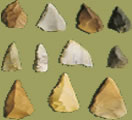
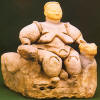 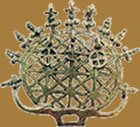 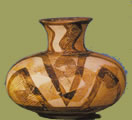 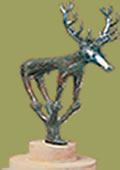
With historical buildings and solid
origin, The Museum of Anatolian Civilizations in Ankara (Anadolu
Medeniyetleri Müzesi) got the first place among the 68 museums and was awarded the title of Museum of the Year" in Lausanne, Switzerland on 19 April 1997.
The Anatolian Civilizations Museum (Museum of
Ancient Anatolian Civilizations) with its
original collections is considered to be one of the top Museums in the world
today. Anatolian archaeological creations are exhibited in a chronological order starting from
the Palaeolithic Age up to the present time.
Ankara Anatolian Civilizations Museum Index
(Museum of Anatolian Civilizations)

 The
Museum Anatolian Civilizations is located in the district called Atpazari ("the
horse market") to the south of Ankara Castle. The Museum occupies two Ottoman
buildings which have been renovated and altered to suit their new role. One of
them is the Mahmud Pasha Bedesten and the other is the Kursunlu Han. The
Museum Anatolian Civilizations is located in the district called Atpazari ("the
horse market") to the south of Ankara Castle. The Museum occupies two Ottoman
buildings which have been renovated and altered to suit their new role. One of
them is the Mahmud Pasha Bedesten and the other is the Kursunlu Han.
It is
believed that the Bedesten (part of a bazaar where valuable goods were stored)
was built between 1464 and 1471 by Mahmud Pasha, the grand vizier of Sultan
Mehmet the Conqueror. There is no inscription on the building. Documentary
sources, however, indicate that Ankara "sof" (cloth made from goat or camel
hair) was distributed from here. The building has a plan of standard type. There
is a covered rectangular area with 10 domes in the middle. There is a
surrounding vaulted arcade, occupied by shops arranged so that those of the same
trade face each other.
Recent
research, into the land registers and judicial records of the Ankara province
shows that Kursunlu Han was built by Mehmet Pasha who succeeded Mahmud Pasha to
the post of grand vizier in the reign of Sultan Mehmet. He held the post until
1470, and he founded the Han to provide revenue for his soup-kitchen or the poor
and needy in the Uskudar, where finally he was buried. The building lacks an
inscription, but during restoration work carried out in 1946 coins of Sultan
Murat II were found, proving that the Han was in existence by the first half of
the 15th century. The building has a typical plan for a Han of the Ottoman
Period. In the middle there is a courtyard. It is surrounded by a series of
rooms in two storeys. There are 28 rooms on the ground floor and 30 on the
first. All of the rooms have fireplaces. In the basement of the west and south
sides of the building there is a L-shaped stable. There are 11 shops on the
north side, 9 on the east and 4 facing each other in the open-ended vaulted
antechamber.
The two
buildings, which are used as a Museum today, fell out of use after a fire in
1981. Today, the two buildings that form the museum, were left after the last
fire in 1881. Top
 The first
Museum in Ankara was established in 1921 by Mubarek Galip Bey, Director of
Cultural Affairs, in one of the towers of Ankara Castle called the Akkale. In
addition, object were also collected together at the Temple of Augustus and at
the Roman Baths. As a result of a suggestion by Ataturk that a Hittite Museum
should be established, objects belonging to the Hittite period that were located
in other museums began to be sent to Ankara. The need thus arose fro a larger
museum. Dr Hamit Zubeyir Kosay, Director of Cultural Affairs, submitted a
proposal to Saffet Arikan, the Minister of Education, stating that the kurshunlu
Han could be used after some essential alterations as a Museum. This proposal
was accepted and work started in 1938. Restoration was only completed in 1968.
However, after the work on the domed central room of the Bedesten had been
partly finished in 1940, a start was made on the arrangement of display objects
under the direction of Prof. H.G. Guterbock. This display was opened to the
public in 1943 while other parts of the museum were still under construction.
The restoration project of this part was drawn up by the architect, Macit Kural,
and the restoration itself was carried out by the architect, Zühtü Bey, after
competitive bidding. In 1948 the museum moved into the four rooms at the
Kurshunlu Han, the restoration of which was then finished, there bye leaving the
building at Akkale as a depot. The restoration and display projects of the shops
around the domed area were drawn and carried out by Ihsan Kiygi, an architect at
the Monuments Department. Five of the shops were removed and a large surrounding
corridor was created as an exhibition area. The Museum building took its present
from in 1968. The first
Museum in Ankara was established in 1921 by Mubarek Galip Bey, Director of
Cultural Affairs, in one of the towers of Ankara Castle called the Akkale. In
addition, object were also collected together at the Temple of Augustus and at
the Roman Baths. As a result of a suggestion by Ataturk that a Hittite Museum
should be established, objects belonging to the Hittite period that were located
in other museums began to be sent to Ankara. The need thus arose fro a larger
museum. Dr Hamit Zubeyir Kosay, Director of Cultural Affairs, submitted a
proposal to Saffet Arikan, the Minister of Education, stating that the kurshunlu
Han could be used after some essential alterations as a Museum. This proposal
was accepted and work started in 1938. Restoration was only completed in 1968.
However, after the work on the domed central room of the Bedesten had been
partly finished in 1940, a start was made on the arrangement of display objects
under the direction of Prof. H.G. Guterbock. This display was opened to the
public in 1943 while other parts of the museum were still under construction.
The restoration project of this part was drawn up by the architect, Macit Kural,
and the restoration itself was carried out by the architect, Zühtü Bey, after
competitive bidding. In 1948 the museum moved into the four rooms at the
Kurshunlu Han, the restoration of which was then finished, there bye leaving the
building at Akkale as a depot. The restoration and display projects of the shops
around the domed area were drawn and carried out by Ihsan Kiygi, an architect at
the Monuments Department. Five of the shops were removed and a large surrounding
corridor was created as an exhibition area. The Museum building took its present
from in 1968.
Today the
Kurshunlu Han is used as the administration section. Located there are study
rooms, the library, a conference hall, a laboratory and workshops. The Mahmud
Pasha Bedesteni is used as the public display area. The Anatolian Civilizations
Museum is among the leading museums of the world on account of its unique
collections of material. The archaeology of Anatolia from the Palaeolithic Age to
the present day is displayed by periods in chronological order in the pleasant
ambience of Ottoman surroundings. Top
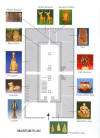 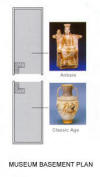

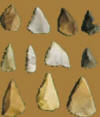 The
Paleolithic Age, which is also called Old Stone Age, started almost 2 million
years ago and ended 10 000 years ago. However, it is necessary to note that
those dates are valid in the world generally and are open to change locally.
This era containing the very big part as 99% of the history of humanity, takes
an important place in the mentioned historical evolution by containing the
appearance of first human ancestors and representing the entrance to the process
of becoming human by the way of the production of first tools Top The
Paleolithic Age, which is also called Old Stone Age, started almost 2 million
years ago and ended 10 000 years ago. However, it is necessary to note that
those dates are valid in the world generally and are open to change locally.
This era containing the very big part as 99% of the history of humanity, takes
an important place in the mentioned historical evolution by containing the
appearance of first human ancestors and representing the entrance to the process
of becoming human by the way of the production of first tools Top

 In the human history, the period that begins with food
production and the establishment of first settlements is called the Neolithic
Age. At the beginning of the era, the first period in which although people knew
food production but the clay pots were not made yet, instead basket, wood and
stone were used, is called the Akeramic Neolithic. This period which was found
in only a few places in Anatolia, gives the first examples of settled villages
with structures built according to a specific arrangement, stone and bone tools
and guns and ornaments. Top In the human history, the period that begins with food
production and the establishment of first settlements is called the Neolithic
Age. At the beginning of the era, the first period in which although people knew
food production but the clay pots were not made yet, instead basket, wood and
stone were used, is called the Akeramic Neolithic. This period which was found
in only a few places in Anatolia, gives the first examples of settled villages
with structures built according to a specific arrangement, stone and bone tools
and guns and ornaments. Top

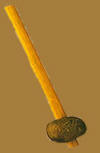 It is
understood from the continuation of Hacilar, Canhasan, Kurucay settlements that
the period called Chalcolithic Age, since copper started to be used in addition
to stone tools is the continuation of late Neolithic. In this era, regional
features are dominant like in Neolithic. Chalcolithic Age is examined in Early, Middle and Late
periods. Top It is
understood from the continuation of Hacilar, Canhasan, Kurucay settlements that
the period called Chalcolithic Age, since copper started to be used in addition
to stone tools is the continuation of late Neolithic. In this era, regional
features are dominant like in Neolithic. Chalcolithic Age is examined in Early, Middle and Late
periods. Top

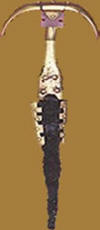 The Bronze period begins around 3000 in Anatolia, around 2500
in the Aegean and Crete, around 2000 in Europe. Bronze is obtained by mixing
copper and tin ( % 90 copper, % 10 tin). In this period apart from bronze tools
other kinds such as copper, gold and electron, which is an alloy of natural gold
and silver are also produced for using in religious ceremonies. The people in
this period lived in cities surrounded with fortification walls. Houses are
built in rectangular shapes on stone foundations with sun dried brick walls and.
Agriculture, animal husbandry, merchandise and mine production are the means of
life. The Bronze period begins around 3000 in Anatolia, around 2500
in the Aegean and Crete, around 2000 in Europe. Bronze is obtained by mixing
copper and tin ( % 90 copper, % 10 tin). In this period apart from bronze tools
other kinds such as copper, gold and electron, which is an alloy of natural gold
and silver are also produced for using in religious ceremonies. The people in
this period lived in cities surrounded with fortification walls. Houses are
built in rectangular shapes on stone foundations with sun dried brick walls and.
Agriculture, animal husbandry, merchandise and mine production are the means of
life.
Alacahoyuk, 67 km to Yozgat city and 3 hours away from Ankara
is the most advanced settlement area in Anatolia from this period. The rich
graves discovered here are in shapes of regular stone rooms. The dead is put in
the centre of these rooms with gifts, in a posture that the knees are pulled up
to the belly (hocker position). Sacrificed and presented during the ceremony,
bull heads and feet are left on top of the roofs. Goats and sheep are also
sacrificed. They might have been served to the attendants at the funeral. The
graves are thought to be used for many generations. Most of the gifts are
composed of gold, silver, electron, bronze objects and decorative items such as
diadems, necklaces, hairpins, bracelets, earrings made of precious stones like
amber, rock crystal, etc. Bronze and gold weapons, sun discs, deer and bull
figurines, goddess statues of religious services are invaluable works of art
discovered here. For the first time in this period do we find bronze spear heads
in Anatolia. They resemble very much to their counterparts in Mesopotamia and
Syria which is an interesting point.
Another important place in the bronze age is Troy, Level 1.
dated back to 2900-2500 BC. This first city in Troy, now partly unearthed is
wrapped up with a 90 meter wall. Houses are in megaron type again and the
entrances are from the narrow sides. Walls are stone and set in the herring bone
pattern. Troy, Level 2. is dated back to 2500-2000 BC. It is built on top of
Troy Level 1. The inhabitants of this level come from the Aegean and Balkans
like those of the first level. It is also surrounded with walls but this time
they are 20 meters longer. The expedition team uncovered a royal residence that
belongs to a king on one of the hilltops. Heinrich Schlieman, the German
businessman who dug the Trojan mound in 1870, discovered a treasury at this
level of Troy 2. Knowing Homer's Iliad by heart, he was in search of King
Priamos's treasury and for years he believed the treasury he had discovered at
the site was so. In the last years of his life, however, he was going to learn
that the treasury actually belonged to a different level, the level 2, thus, to
a different time period. Top

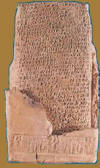 The start of this period is also the beginning of the written
history in Anatolia and the Middle Bronze Age in Anatolia. During 1960 BC, the
Old Assyrian State in North Mesopotamia established a developed trade system
with Anatolia . In this period, feudal city Kingdoms consisting mostly of Neo
Hattians were sovereign in Anatolia . Mesopotamians who knew the wealth of
Anatolia since Akkad Age, established a wide and systematic commercial
relationship with their Northern neighbours beginning with Assyrians. They
brought their language, hieroglyph and cylinder seals which are foreign to
Anatolia , with them. So, Anatolia entered to the written history eras since
1950 BC. Top The start of this period is also the beginning of the written
history in Anatolia and the Middle Bronze Age in Anatolia. During 1960 BC, the
Old Assyrian State in North Mesopotamia established a developed trade system
with Anatolia . In this period, feudal city Kingdoms consisting mostly of Neo
Hattians were sovereign in Anatolia . Mesopotamians who knew the wealth of
Anatolia since Akkad Age, established a wide and systematic commercial
relationship with their Northern neighbours beginning with Assyrians. They
brought their language, hieroglyph and cylinder seals which are foreign to
Anatolia , with them. So, Anatolia entered to the written history eras since
1950 BC. Top

 According to written records, in the late Colony Age, Anitta,
who is the son of Pithana established the first government of Anatolia
administered by central system, by taking the first step of uniting the Hittites
living in the form of city principalities. Top According to written records, in the late Colony Age, Anitta,
who is the son of Pithana established the first government of Anatolia
administered by central system, by taking the first step of uniting the Hittites
living in the form of city principalities. Top

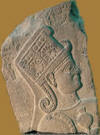 During 1200 BC, Aegean Migration attacks, coming from West,
gave an end to Hittite Empire that lost its old power, and all the Hittite
cities especially Bogazkoy were pillaged and burned by invaders. The Hittites,
who escaped from those attacks, by moving to South and Southwest Taurus, lived
the era of last Hittite principalities in the history. After that, it was not
possible to establish a central Hittite Government, Hittite tradition had been
endured until 700 BC which is the period at which it is erased from the history
scene by the continuous attacks of Assyrians. Top During 1200 BC, Aegean Migration attacks, coming from West,
gave an end to Hittite Empire that lost its old power, and all the Hittite
cities especially Bogazkoy were pillaged and burned by invaders. The Hittites,
who escaped from those attacks, by moving to South and Southwest Taurus, lived
the era of last Hittite principalities in the history. After that, it was not
possible to establish a central Hittite Government, Hittite tradition had been
endured until 700 BC which is the period at which it is erased from the history
scene by the continuous attacks of Assyrians. Top

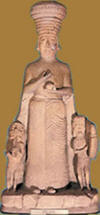 Phrygians who entered into Anatolia with Aegean Migrations
coming from Southeast Europe in the beginning of 12 th century BC, devastated
almost all of the important cities of Anatolia and started to rule Anatolia
slowly by destroying the Hittite Empire. The main settlement area of Phrygians
was Sakarya region, Gordian being the centrum, Afyon, Kutahya and Eskisehir were
parts of that region. The few inscription that they left shows that they used an
Indian-European language. While Greek sources especially Heredot informs that
they came from Macedonia as big and little Byrigeses, in the Assyrian sources
Muskili Mita was mentioned. Generally, it is accepted that Mita and Midas were
the same person, the Muskilies were Phrygians. Top Phrygians who entered into Anatolia with Aegean Migrations
coming from Southeast Europe in the beginning of 12 th century BC, devastated
almost all of the important cities of Anatolia and started to rule Anatolia
slowly by destroying the Hittite Empire. The main settlement area of Phrygians
was Sakarya region, Gordian being the centrum, Afyon, Kutahya and Eskisehir were
parts of that region. The few inscription that they left shows that they used an
Indian-European language. While Greek sources especially Heredot informs that
they came from Macedonia as big and little Byrigeses, in the Assyrian sources
Muskili Mita was mentioned. Generally, it is accepted that Mita and Midas were
the same person, the Muskilies were Phrygians. Top

 The Urartians established a state around Lake Van in 1000 BC.
During the most powerful times of their state, the territories of Urartians
spanned a wide area from the Urmiye Lake to Euphrates River Valley, from
Gokcegol in the south of Kafkasia, Aras River Valley, the east shores of
Black Sea to Musul, Halep, and Mediterranean. The land of Urartians consisted of
plains, which were surrounded by high and rocky mountains, plateaus, narrow and
deep valleys. Urartians, who had to adopt the difficult natural conditions of
East Anatolia, were successful in agriculture and stock-breeding.The region of
East Anatolia is appropriate for stock-breeding as well as having plains
suitable for agriculture and rich mine resources. Mesopotamia people had noticed
the natural wealth of that region for a long time. Because of that, that land
was attacked many times by Assyrians. At the beginning of 1000 BC, Urartians
were unified and established the Urartian State whose capital is today's Van (Tusba)
to prevent those attacks. Top The Urartians established a state around Lake Van in 1000 BC.
During the most powerful times of their state, the territories of Urartians
spanned a wide area from the Urmiye Lake to Euphrates River Valley, from
Gokcegol in the south of Kafkasia, Aras River Valley, the east shores of
Black Sea to Musul, Halep, and Mediterranean. The land of Urartians consisted of
plains, which were surrounded by high and rocky mountains, plateaus, narrow and
deep valleys. Urartians, who had to adopt the difficult natural conditions of
East Anatolia, were successful in agriculture and stock-breeding.The region of
East Anatolia is appropriate for stock-breeding as well as having plains
suitable for agriculture and rich mine resources. Mesopotamia people had noticed
the natural wealth of that region for a long time. Because of that, that land
was attacked many times by Assyrians. At the beginning of 1000 BC, Urartians
were unified and established the Urartian State whose capital is today's Van (Tusba)
to prevent those attacks. Top

 The
fundamental of Lydian's art comes from the Bronze Age in which there were
relationships, which is sometimes friendly and sometimes hostile, between their
ancestors and Hittite Empire. Lydians made magnificent improvements in Iron Age
especially from Gyges period to Croesus (about 685 BC to 547 BC) period
containing the dynasty of Mermnad. Their country became the most powerful
kingdom after the death of Midas, who was the King of Phrygians, by the Kimmer
attack. Lydians preserved their language and culture but they become open to the
relationships with East (Phrygians, Luwis, Meds and Persians) as well as with
West (Greeks); they had diplomatic relationships with Egypt and Assyrians.
Top The
fundamental of Lydian's art comes from the Bronze Age in which there were
relationships, which is sometimes friendly and sometimes hostile, between their
ancestors and Hittite Empire. Lydians made magnificent improvements in Iron Age
especially from Gyges period to Croesus (about 685 BC to 547 BC) period
containing the dynasty of Mermnad. Their country became the most powerful
kingdom after the death of Midas, who was the King of Phrygians, by the Kimmer
attack. Lydians preserved their language and culture but they become open to the
relationships with East (Phrygians, Luwis, Meds and Persians) as well as with
West (Greeks); they had diplomatic relationships with Egypt and Assyrians.
Top

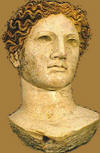 Ankara, the capital of the Turkish Republic, isolated in
Anatolia at the cross roads of main highways connecting east to west and north to
south. Ankara, the capital of the Turkish Republic, isolated in
Anatolia at the cross roads of main highways connecting east to west and north to
south.
The Prehistoric settlements discovered is Ankara and its
vicinity indicate that the area was continually settled since ancient times.
The remains of small palaces belonging to the Chalcolithic
era and Bronze Age unearthed in Ahlatlibel to the southwest of Ankara and in
Kocumbeli indicate the existence of principalities in the Prehistoric ages.
It is known that later Ankara and its vicinity were captured
by the Hittites who settled in the city. A Hittite settlement was discovered in
Bitik near the Mürted Plain. In Gavurkale near the town of Haymana, 60 km.
southwest of Ankara, there is an area sacred to the Hittites.
The first
important settlement in Ankara was thus during the Phrygian times. Excavations
showed that this Phrygian town in Ankara occupied the land between the Temple of
Augustus and the Roman Bath and its vicinity. Top

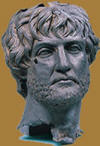 There were major changes in Anatolia in the wake of the
Aegean migrations, which took place at the end of the second millennium. This
event brought about the fall of the Hittite Empire and in the first half of the
lst millennium BC., Late Hittites, Urartians and Phrygians, who had established
kingdoms in different areas of Anatolia, took over control. At the same period,
the Greek people arrived in Western Anatolia, via islands, as a result of the
disruptions caused by the Dorian Migrations. After settling in Western Anatolia,
they unified with local people and established the foundations of the Ionian
civilizations. In this way the first colony settlements were founded. This
period is characterized by motifs drawn by compasses and is called the "PROTOGEOMETRIC
AGE" (1100 - 950 B. c.). Then it is followed by the "GEOMETRIC AGE", represented
with the alteration of round shaped motifs into angular ones. There were major changes in Anatolia in the wake of the
Aegean migrations, which took place at the end of the second millennium. This
event brought about the fall of the Hittite Empire and in the first half of the
lst millennium BC., Late Hittites, Urartians and Phrygians, who had established
kingdoms in different areas of Anatolia, took over control. At the same period,
the Greek people arrived in Western Anatolia, via islands, as a result of the
disruptions caused by the Dorian Migrations. After settling in Western Anatolia,
they unified with local people and established the foundations of the Ionian
civilizations. In this way the first colony settlements were founded. This
period is characterized by motifs drawn by compasses and is called the "PROTOGEOMETRIC
AGE" (1100 - 950 B. c.). Then it is followed by the "GEOMETRIC AGE", represented
with the alteration of round shaped motifs into angular ones.
The art, which has been always important in Ionia, had
witnessed major developments, both in terms of architectural and sculptural
characteristics, under the oriental influences. The foundations of giant
temples were established in this period. The anatomical characteristics of the
human body were worked out more realistically on the sculptural work in
comparison with the ones from profogeometric or geometric ages. Top

Related Links and Sources
-
-
Ankara
University
-
Anatolian Civilisations Museum
-
-
-
-
-
-
-
-
-
Wikipedia-Museum
of Anatolian Civilizations
-
Anadolu
Medeniyetleri Muzesi
-
Promotion Video of Museum of Anatolian
Civilizations
Top

TransAnatolie Tour
|








 The first
Museum in Ankara was established in 1921 by Mubarek Galip Bey, Director of
Cultural Affairs, in one of the towers of Ankara Castle called the Akkale. In
addition, object were also collected together at the Temple of Augustus and at
the Roman Baths. As a result of a suggestion by Ataturk that a Hittite Museum
should be established, objects belonging to the Hittite period that were located
in other museums began to be sent to Ankara. The need thus arose fro a larger
museum. Dr Hamit Zubeyir Kosay, Director of Cultural Affairs, submitted a
proposal to Saffet Arikan, the Minister of Education, stating that the kurshunlu
Han could be used after some essential alterations as a Museum. This proposal
was accepted and work started in 1938. Restoration was only completed in 1968.
However, after the work on the domed central room of the Bedesten had been
partly finished in 1940, a start was made on the arrangement of display objects
under the direction of Prof. H.G. Guterbock. This display was opened to the
public in 1943 while other parts of the museum were still under construction.
The restoration project of this part was drawn up by the architect, Macit Kural,
and the restoration itself was carried out by the architect, Zühtü Bey, after
competitive bidding. In 1948 the museum moved into the four rooms at the
Kurshunlu Han, the restoration of which was then finished, there bye leaving the
building at Akkale as a depot. The restoration and display projects of the shops
around the domed area were drawn and carried out by Ihsan Kiygi, an architect at
the Monuments Department. Five of the shops were removed and a large surrounding
corridor was created as an exhibition area. The Museum building took its present
from in 1968.
The first
Museum in Ankara was established in 1921 by Mubarek Galip Bey, Director of
Cultural Affairs, in one of the towers of Ankara Castle called the Akkale. In
addition, object were also collected together at the Temple of Augustus and at
the Roman Baths. As a result of a suggestion by Ataturk that a Hittite Museum
should be established, objects belonging to the Hittite period that were located
in other museums began to be sent to Ankara. The need thus arose fro a larger
museum. Dr Hamit Zubeyir Kosay, Director of Cultural Affairs, submitted a
proposal to Saffet Arikan, the Minister of Education, stating that the kurshunlu
Han could be used after some essential alterations as a Museum. This proposal
was accepted and work started in 1938. Restoration was only completed in 1968.
However, after the work on the domed central room of the Bedesten had been
partly finished in 1940, a start was made on the arrangement of display objects
under the direction of Prof. H.G. Guterbock. This display was opened to the
public in 1943 while other parts of the museum were still under construction.
The restoration project of this part was drawn up by the architect, Macit Kural,
and the restoration itself was carried out by the architect, Zühtü Bey, after
competitive bidding. In 1948 the museum moved into the four rooms at the
Kurshunlu Han, the restoration of which was then finished, there bye leaving the
building at Akkale as a depot. The restoration and display projects of the shops
around the domed area were drawn and carried out by Ihsan Kiygi, an architect at
the Monuments Department. Five of the shops were removed and a large surrounding
corridor was created as an exhibition area. The Museum building took its present
from in 1968. 




 In the human history, the period that begins with food
production and the establishment of first settlements is called the Neolithic
Age. At the beginning of the era, the first period in which although people knew
food production but the clay pots were not made yet, instead basket, wood and
stone were used, is called the Akeramic Neolithic. This period which was found
in only a few places in Anatolia, gives the first examples of settled villages
with structures built according to a specific arrangement, stone and bone tools
and guns and ornaments.
In the human history, the period that begins with food
production and the establishment of first settlements is called the Neolithic
Age. At the beginning of the era, the first period in which although people knew
food production but the clay pots were not made yet, instead basket, wood and
stone were used, is called the Akeramic Neolithic. This period which was found
in only a few places in Anatolia, gives the first examples of settled villages
with structures built according to a specific arrangement, stone and bone tools
and guns and ornaments. 












 The Urartians established a state around Lake Van in 1000 BC.
During the most powerful times of their state, the territories of Urartians
spanned a wide area from the Urmiye Lake to Euphrates River Valley, from
Gokcegol in the south of Kafkasia, Aras River Valley, the east shores of
Black Sea to Musul, Halep, and Mediterranean. The land of Urartians consisted of
plains, which were surrounded by high and rocky mountains, plateaus, narrow and
deep valleys. Urartians, who had to adopt the difficult natural conditions of
East Anatolia, were successful in agriculture and stock-breeding.The region of
East Anatolia is appropriate for stock-breeding as well as having plains
suitable for agriculture and rich mine resources. Mesopotamia people had noticed
the natural wealth of that region for a long time. Because of that, that land
was attacked many times by Assyrians. At the beginning of 1000 BC, Urartians
were unified and established the Urartian State whose capital is today's Van (Tusba)
to prevent those attacks.
The Urartians established a state around Lake Van in 1000 BC.
During the most powerful times of their state, the territories of Urartians
spanned a wide area from the Urmiye Lake to Euphrates River Valley, from
Gokcegol in the south of Kafkasia, Aras River Valley, the east shores of
Black Sea to Musul, Halep, and Mediterranean. The land of Urartians consisted of
plains, which were surrounded by high and rocky mountains, plateaus, narrow and
deep valleys. Urartians, who had to adopt the difficult natural conditions of
East Anatolia, were successful in agriculture and stock-breeding.The region of
East Anatolia is appropriate for stock-breeding as well as having plains
suitable for agriculture and rich mine resources. Mesopotamia people had noticed
the natural wealth of that region for a long time. Because of that, that land
was attacked many times by Assyrians. At the beginning of 1000 BC, Urartians
were unified and established the Urartian State whose capital is today's Van (Tusba)
to prevent those attacks. 







